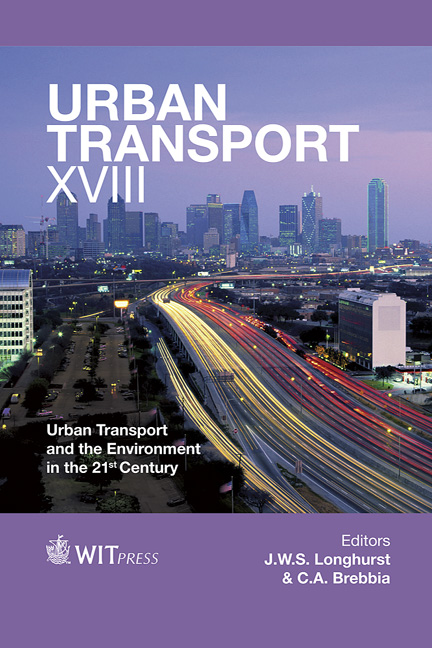A Fuzzy Logic Approach To Modelling The Passengers’ Flow And Dwelling Time
Price
Free (open access)
Transaction
Volume
128
Pages
11
Page Range
359 - 369
Published
2012
Size
464 kb
Paper DOI
10.2495/UT120311
Copyright
WIT Press
Author(s)
A. Berbey, R. Galan, J. D. Sanz Bobi & R. Caballero
Abstract
The passengers’ flow and station dwell time estimation are important tasks for mass transit planning. However, classical methods are difficult to apply into some practical achievements. This paper presents a new approach that models passengers’ flow and its effect on passenger alighting and boarding time in mass transportation systems in the presence of uncertainties. The applied technique combines origin destination matrices approach with the application of artificial intelligence. This new approach allows the inclusion of some intuitive knowledge provided by a fuzzy logic inference motor to predict the flow demand of passengers’ trips, alighting and boarding time passenger cars in explicit stations. Keywords: passengers’ flow modelling, fuzzy logic inference, artificial intelligence, uncertainties. 1 Introduction It is well known that passengers’ flow modelling is very important for evaluating not only the effectiveness of station facilities, but also the rolling stock [1]. This model reflects the influence of these two factors in the process of boarding and alighting passengers on the train. On the other hand, it is important to note that the correct estimation of dwelling time is as important as the restrictions imposed by the line speed and acceleration of the train [2]. The passengers’ flow modelling has been tackled by several authors [3–7]. In order to estimate the dwelling time, different models have been proposed. Most of them involve passengers’ flow calculation in the process of boarding and alighting within each train car [1, 2, 8].
Keywords
passengers’ flow modelling, fuzzy logic inference, artificial intelligence, uncertainties.





